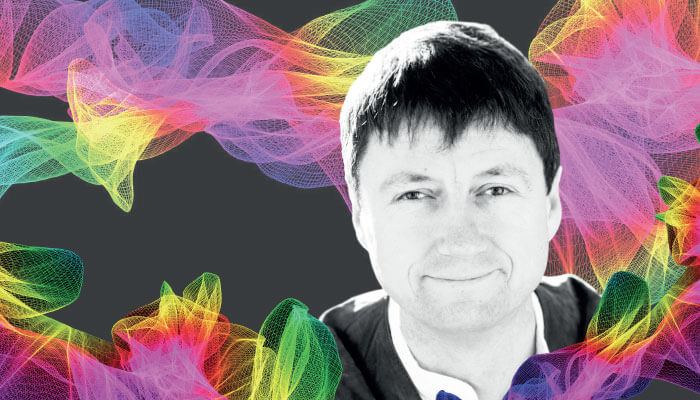The periodic table might have reached the ripe old age of 150 this year, but there are still a number of key questions hiding within Mendeleev’s iconic chart. Only in 2019 have we confirmed the ionization potential of promethium (element number 61 of 118 known elements) – with that gap filled, all elements up to lawrencium (element 103) have now had their atomic properties experimentally determined. We spoke to Ulli Köster (Institut Laue-Langevin, Grenoble, France), a nuclear physicist-come-chemist and contributor to the study, to find out more.

Tell us about the promethium project.
The study can be split into three main parts: (i) nuclear transmutation to produce promethium, (ii) purifying the promethium, and (iii) spectroscopic analysis. We used enriched and pre-purified neodymium-146 as a precursor and irradiated it in our institute’s high-flux reactor, then shipped it to the Paul Scherrer Institute in Switzerland for chemical separation of the promethium fraction. The promethium was next passed to Mainz University in Germany to obtain its atomic spectrum, from which we were able to determine the ionization potential of the element using a combination of laser spectroscopy and mass separation, effectively tripling our knowledge of atomic levels in this element.
Why has this part of the periodic table been missing for so long?
As a scientific community, we’re still in the process of measuring elemental ionization potentials. The super-heavy elements at the top of the periodic table, for example, have only been synthesized for the first time very recently and are still produced in meager quantities – a few atoms an hour, or in some cases a month. As a result, it’s difficult to obtain big enough samples for spectroscopic analysis. Promethium is obviously less exotic, but still isn’t readily available due to the radioactivity of its isotopes. Analysis is also complicated by the element’s complex atomic spectrum, but advances in atomic spectroscopy are constantly enabling new breakthroughs; for example, we now we now use titanium sapphire lasers, which facilitates the scanning of wide frequency regions more easily than was previously possible.
For what applications will this knowledge of promethium be used?
Promethium isotopes have various applications. An interesting feature of promethium-147 is that it has a half-life of 2.6 years, and one can amass a relatively large amount of it using high-flux neutron irradiations. Due to the considerable energy released by its beta decay, it could be used to produce a nuclear battery, transforming this energy into electricity – such a battery can operate under harsh conditions, so could be used to power satellites or probes used in challenging geophysical environments. Promethium-147 prepared in our experiment is also being used to study one of its nuclear properties, the neutron capture cross-section, which is important for nuclear astrophysics, and the method of producing high activities of pure radionuclides has applications in nuclear medicine, namely in cancer treatment.
How important was collaboration in this work?
The Institut Laue-Langevin is involved in a huge collaborative network with involvement in many interesting projects with teams from all over the world. The institute is an established European research center operated by its three founding countries (France, Germany and UK) to provide instrument access to scientists of its 10 member countries; we’re essentially a service laboratory with around 1,600 users a year, and our main role is providing neutron beams for neutron scattering experiments and various other neutron applications. In the current study, we produced promethium by bombarding neodymium-146 with neutrons, and collaborated with centers in both Switzerland and Germany for the subsequent steps.
What’s next for your group?
We are working on various other isotopes, including some for cancer therapy; for example, lutetium-177, which is the current gold-standard for targeted radionuclide therapy. Our ability to produce high-purity radioactive samples through neutron capture is generating a lot of interest, and we’re also collaborating with the ISOLDE and MEDICIS facilities at CERN in Geneva, where complementary neutron-deficient isotopes are produced by high-energy proton beams.




